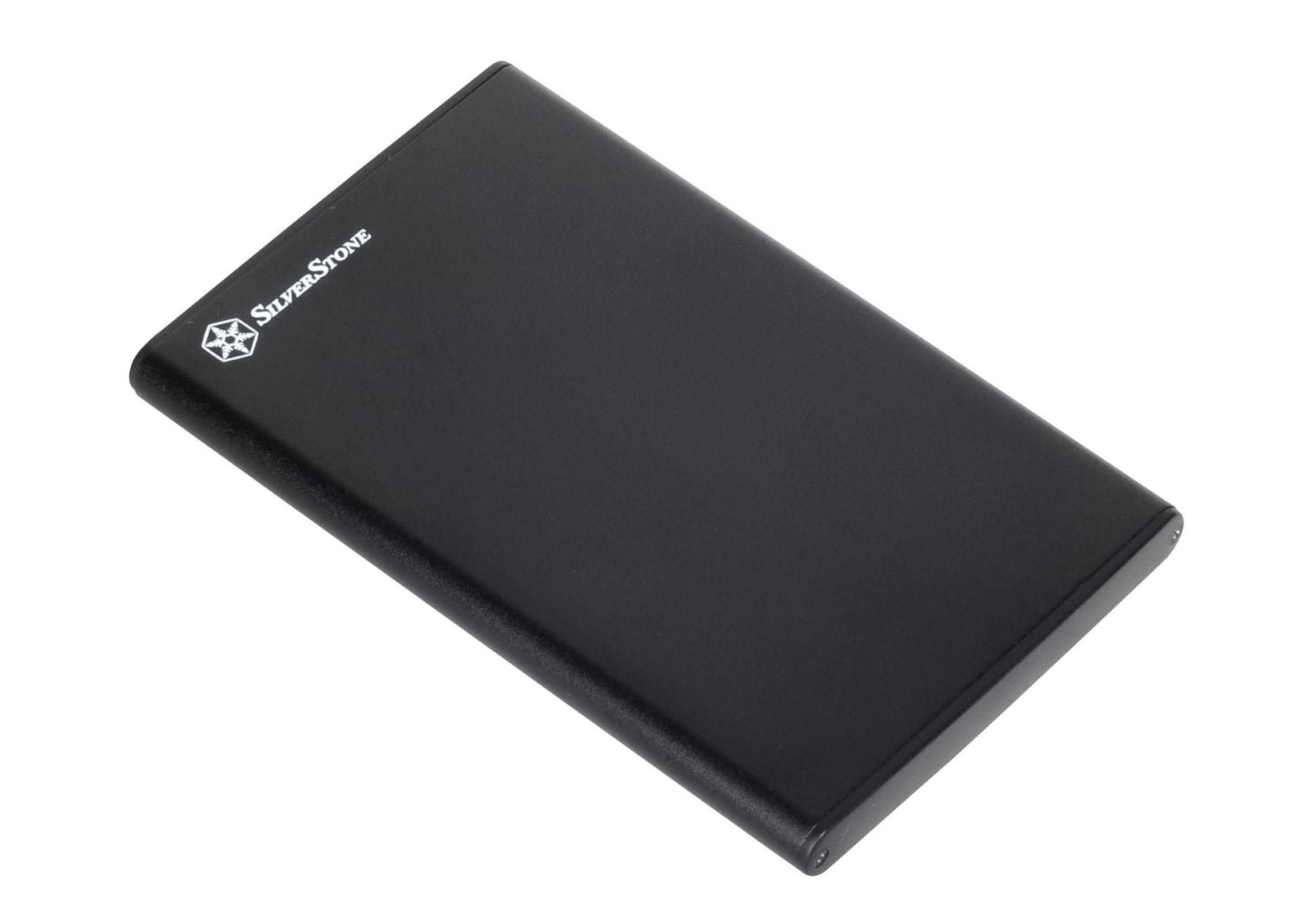Thanks to the interest in thin-and-light laptops, thinner SATA hard drives and SSDs have become widely available. And with them, portable external drives which make use of that thinner form factor, such as the SilverStone TS10. The TS10 is not quite a working storage solution out of its box, as it’s actually just a drive enclosure. You will need to add your own choice of one aforementioned slim drive. It only accepts the 7 mm-thick SATA drives, which are available (if rare) for spinning hard disks; but we’ve noticed that practically every new SSD that’s now launched will come in a 7 mm form, often exclusively so. Comprising a black-anodised aluminium extrusion with black plastic end caps each end, the SilverStone TS10 is a very simply constructed unit. To build it into a fully working external drive you need only attach a 7 mm drive to its basic SATA connector (which includes all USB to SATA electronics on a tiny circuit board), and then slide the drive into the slim outer case, where it’s supported as a friction fit. You can then nip up two tiny screws to secure the removable end cap. There’s even a matching tiny screwdriver included in the box. Not included is any kind of carry pouch to help prevent scratches to the quite markable casework. Construction quality is good, with little to go wrong about its build. And the drive electronics may look simple but we noted that the unit does also support UASP mode, to bolster the often-lacking performance of USB 3.0.
SilverStone TS10: comparing USB modes
For most USB 3.0 storage drives, USB’s default bulk-only transport (BOT) mode is supported, restricting speed to around 300 MB/s, regardless of the capabilities of the actual storage technology inside. Compare this with manufacturer claims that glibly print ‘5 Gb/s SuperSpeed USB 3.0’, which would be equivalent to 625 MB/s after converting from megabits per second to megabytes per second. Tested initially under Mac OS X with an Apple MacBook Pro, we noted that the SilverStone drive enclosure was recognised as compatible with the USB-attached SCSI protocol (UASP). We tried a variety of recent SATA Revision 3 SSDs, to gauge best available performance of the USB 3.0 enclosure. Measured with QuickBench, the SilverStone TS1 enclosure could allow maximum sequential reads of 432 MB/s and maximum sequential writes of 429 MB/s. Those are very good figures, as good as we’ve seen from any USB 3.0 drive. Importantly, the UASP mode should also allow higher queue depths – multiple parallel data streams – which can assist the high-speed passage of many small files simultaneously. We were unable to find a proprietary driver from SilverStone to allow UASP mode in Windows, but will update this review when we discover more. Update 25 April 2014: SilverStone Technology has told us that it does not have a Windows driver for the TS10 as it considers it just a SSD/HDD cover. Turning to the CrystalDiskMark 3.0 benchmark for Windows, we saw reads reach 360 MB/s reads and 383 MB/s for writes, when tested on a Dell M3800 running Windows 8.1. But under Windows 7, reads and writes only rose to 278 and 303 MB/s, respectively.
